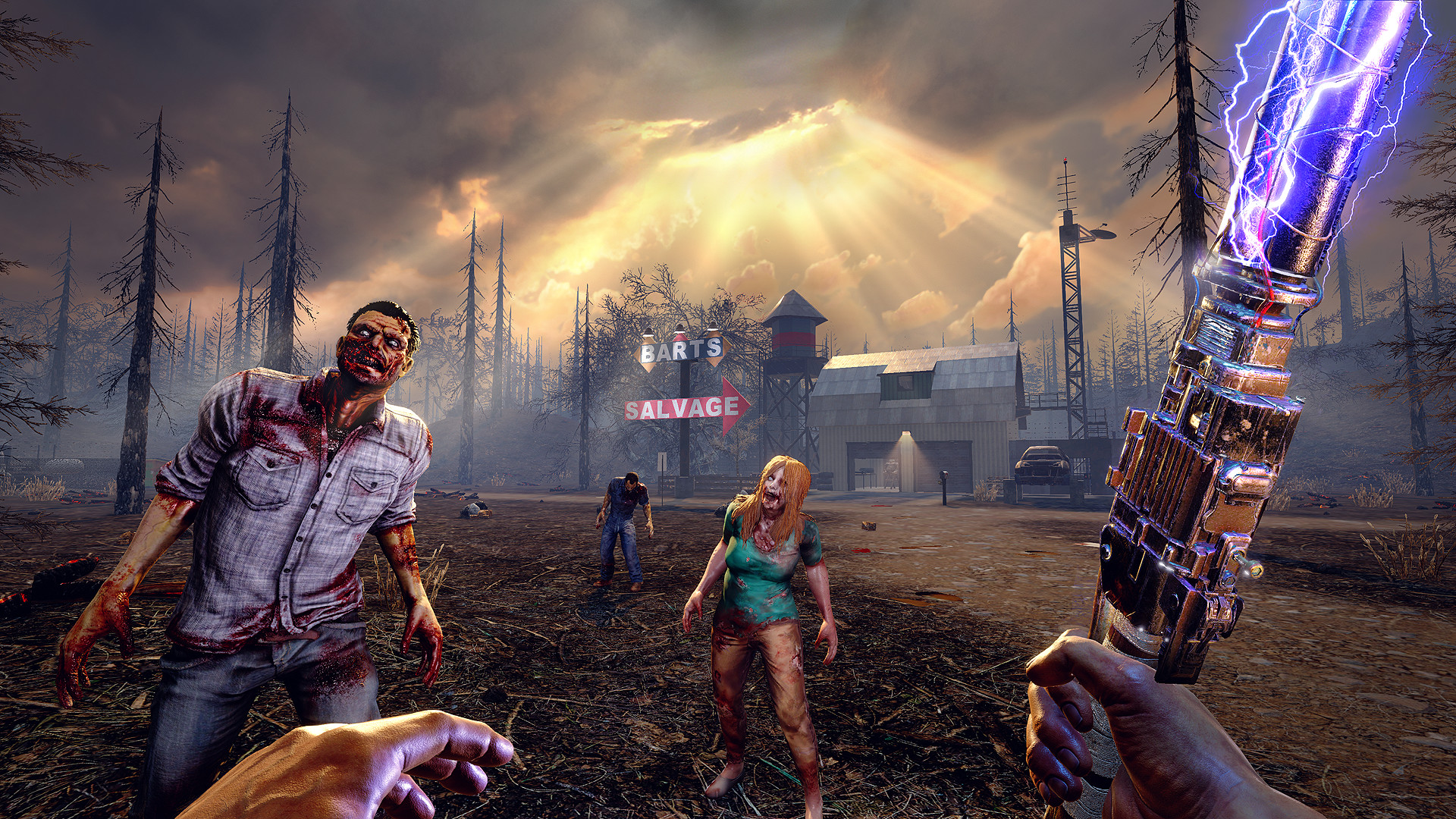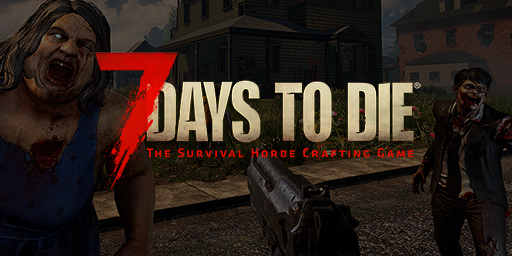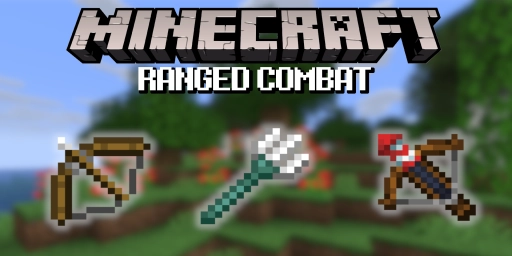You probably still remember your first hours in 7 Days to Die: ragged clothes, a primitive wooden club, the feeling that any crumbling shack could turn into a final boss. It’s almost absurd when later you mow through zombie hordes with an SMG while your base gleams with electric fences, turrets, and steel walls.
The road there is long, rocky, and sometimes frustrating – but incredibly satisfying. That’s exactly what this article is about: how to work your way up from improvised weapons and armour to the ultimate endgame gear. We’ll talk about skills, weapons, mods, crafting, loot, traders, base defence – and, of course, the question: what actually defines the endgame in 7 Days to Die 2.0?
What is the endgame in 7 Days to Die (2.0)?
Many survival games have a clear goal: beat a final boss, build a rocket, leave the island. Not so in 7 Days to Die. There’s no “You win” screen. The endgame begins when:
- The hordes don’t come more often, just bigger.
- Your base is built on concrete/steel and traps.
- You’re using professional weapons, armour, and mods at endgame level.
- You actively seek out the hardest POIs and enemies instead of just surviving.
With version 2.0, this transition feels even more distinct: progression is clearer, gear quality is easier to read, and the moment you get your first automatic weapon or pieces of the Power Armour is a genuine milestone. Your Game Stage (difficulty and loot scaling) ensures the game consistently challenges you in the endgame.
Skills and specialisations for endgame builds in 7 Days to Die
Nothing works without skills. Luck with loot helps, but you’ll only become truly efficient with a clear specialisation.
Important skill trees for the endgame:
- Perception: Snipers, spears, explosives – strong at range.
- Fortitude: Machine guns, fists, stamina/healing – the tank.
- Agility: Pistols, SMGs, bows, stealth – fast and quiet.
- Strength: Shotguns, heavy weapons, melee – loud, brutal, effective.
- Intellect: Crafting, electric traps, turrets, vehicles – no high-tech endgame without Int.
Tip: Specialisations beat all-rounders. A team with clear roles (tank, sniper, technician, support, scout) scales better in the endgame.
Weapon progression: from club to minigun in 7 Days to Die

The most exciting development is the shift from primitive tools to high-tech.
- Early game: wooden club, spear, primitive bow.
- Mid game: pipe weapons, baseball bat, iron tools.
- Late game: AK-47, pump-action, steel tools.
- Endgame: M60, SMG-5, sniper, rocket launcher.
The best endgame weapons and their strengths
- M60 (machine gun): High DPS, enormous rate of fire – perfect for hordes. Downside: very ammo-hungry.
- Sniper rifle: Maximum precision and headshot damage – clears threats at range.
- Auto/Pump-Action shotgun: Unbeatable in tight spaces and during breaches.
- Rocket launcher: Useful in the endgame to blast groups and blockades – use with care!
- SMG-5: Very reliable, good magazine size – strong all-rounder for mobility.
Mods for weapons and armour: maximum DPS and utility
In 2.0, mods matter more than ever. They elevate good gear to elite level.
- Weapon mods: Extended Mag, Silencer, Drum Mag, Reflex Sight, Barrel Extender.
- Armour mods: Pocket Mods (inventory slots), Cooling Mesh (heat reduction), Armor Plating (protection), Muffled Connectors (quieter movement).
- Utility mods: Flashlight (weapon light), Rad-Resist/Anti-Rad (radiation protection, crucial for endgame).
Example combo: M60 + Drum Mag + Barrel Extender + Flashlight = a walking MG nest. The right mod synergy often decides between life and death.
Armour in the endgame: Military, Steel, and Power Armour
At the start, you take anything that protects (leather, scrap, iron). For the endgame, you’ll want targeted sets:
- Military Armour: Light and effective – a strong mix of protection and mobility.
- Steel Armour: The tank of armours – heavy and loud, but extremely tough.
- Power Armour: The king of armours. Rare, expensive, but with mods nearly unstoppable.
A complete Power Armour set often arrives late – but it radically changes how the game feels: you go from hunted to hunter.
Crafting vs loot: how to get endgame gear
The classic question: build it yourself or loot it?
- Looting: Faster access to weapons, but luck-dependent. Traders and high-tier POIs offer the best odds.
- Crafting: Slower, but predictable. With Intellect, you can produce endgame weapons and armour in high quality on purpose.
Tip: Mixed strategy. Use loot to plug gaps, and invest in crafting to scale consistently.
Trader tips for the endgame: recipes, ammo, quests
Even in the endgame, traders are worth their weight in gold:
- Buy excess loot (Dukes → ammo/mods).
- Sell rare recipes and blueprints.
- Reward you with top items for Tier 6 quests.
Especially for endgame ammo (7.62, .44 Magnum, explosives), traders are often the lifesaver.
Base defence in the endgame: electric fences, turrets, steel

What good is the best gear if the base falls? From around day 50–100, hordes become so brutal that your defensive architecture also needs to be endgame-ready.
- Steel walls: Mandatory – anything less will eventually be pulverised.
- Electric fences: Delay hordes and open DPS windows.
- Blade Traps: Massive melee damage in corridors.
- Turrets (shotgun/SMG): Automated firepower, especially strong in a team.
- Molotov/grenade slots: Design choke points to maximise area damage.
Ideally, your base largely defends itself while you only intervene at hotspots.
Multiplayer roles in the endgame: team builds and synergies
Endgame scales even better in multiplayer. Clear role distribution makes blood moons manageable:
- Tank: steel armour, shotgun, melee.
- Sniper: military armour, sniper rifle, focus on headshots.
- Technician: Intellect build, builds traps, repairs, manages turrets.
- Scout: mobile, stealthy, scouts areas, grabs quests.
- Support: cook, medic, trader specialist.
This setup masters even nasty blood moons – and it’s a lot of fun. On your own 7 Days to Die server you can tweak the difficulty – and that doesn’t have to mean smaller hordes!
Late endgame: goals after full gear
Even when you’re in Power Armour and your M60 is perfectly modded, there’s plenty to do:
- Ultra base-building: post-apocalyptic fortresses and design projects.
- Mega horde tests: deliberately provoke the biggest hordes and optimise traps.
- PvP servers: prove your gear in duels.
- Experiment: unusual builds (e.g., fists + Power Armour).
Endgame doesn’t mean the end – it means you set your own goals.
Sample roadmap: endgame gear in 100 days
- Day 1–7: wooden club, bow, first quest rewards. Wooden base.
- Day 8–21: pipe weapons, first guns from the trader. Cobblestone base.
- Day 22–35: AK-47, first mods, motorbike. Base reinforced with concrete.
- Day 36–60: pump-action, military armour, steel tools. 4x4 truck, electric fences.
- Day 61–100: M60, sniper rifle, Power Armour pieces. Base fully steel, turrets active.
- After that: gyrocopter, Tier 6 quests, full Power Armour, large trap systems.
Conclusion: the endgame in 7 Days to Die is a process
7 Days to Die thrives on not having a fixed ending. Your endgame is what you make of it. Version 2.0 makes the journey clearer, more rewarding, and more dynamic. When you’re standing on the steel walls of your base at night, M60 at the ready, while electric fences sizzle the zombies and turrets finish the rest – that’s when you know: the long road was worth it.
More interesting articles
7 Days to Die 2.0: Traders, Quests, Reputation & Strategies
7 Days to Die Vehicles Guide 2.0: From Bicycle to Gyrocopter
7 Days to Die 2.0: Base-building guide for secure bases




